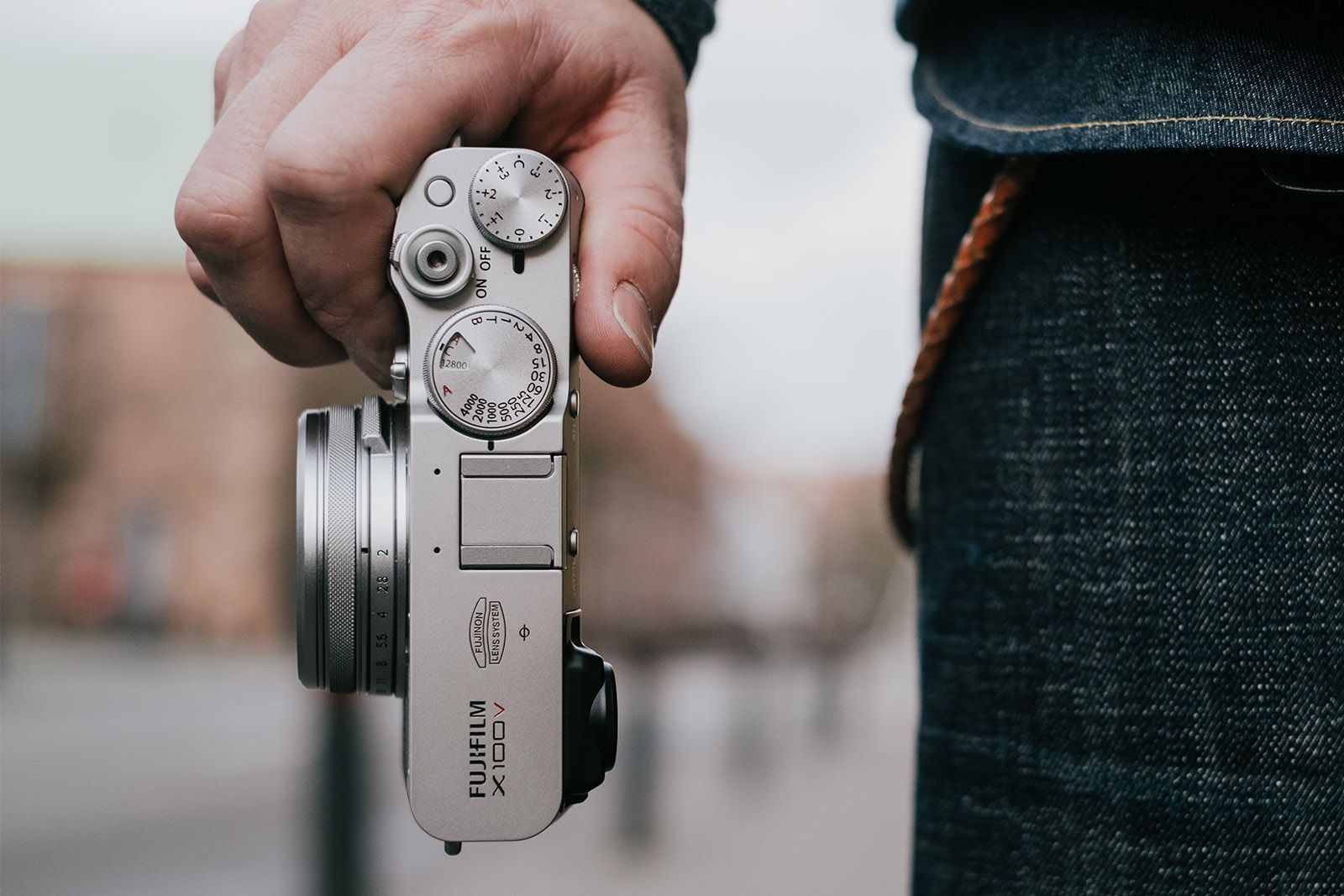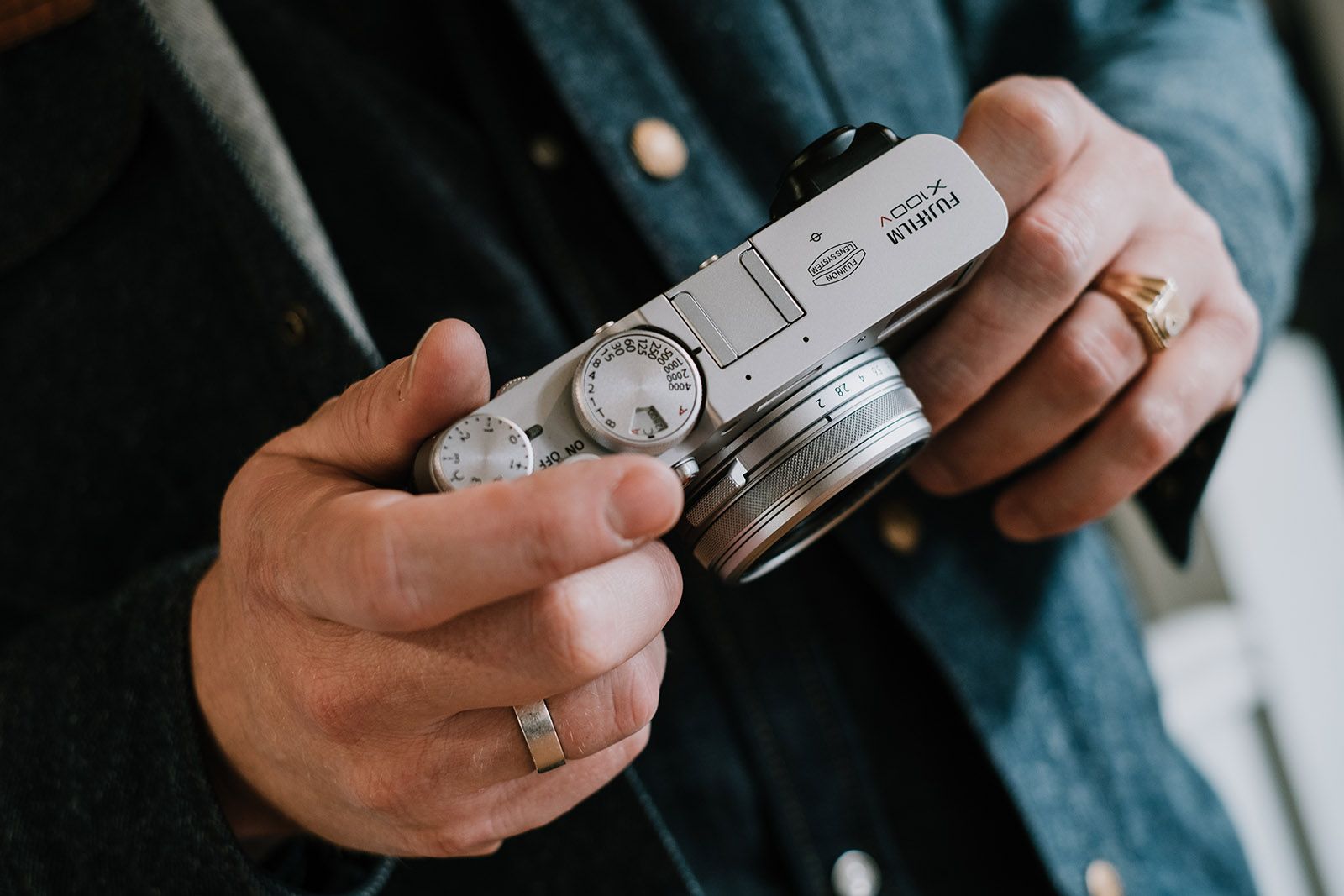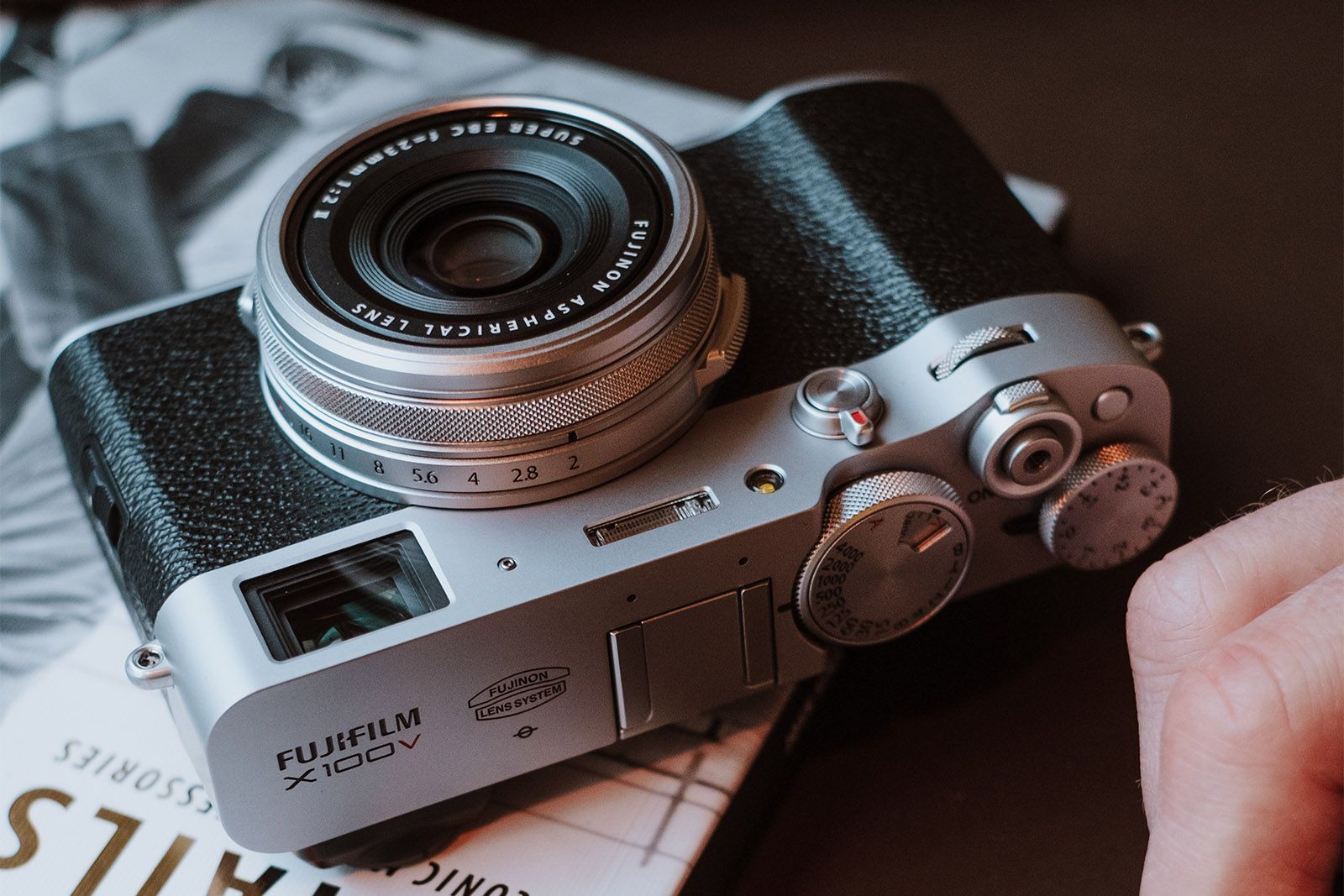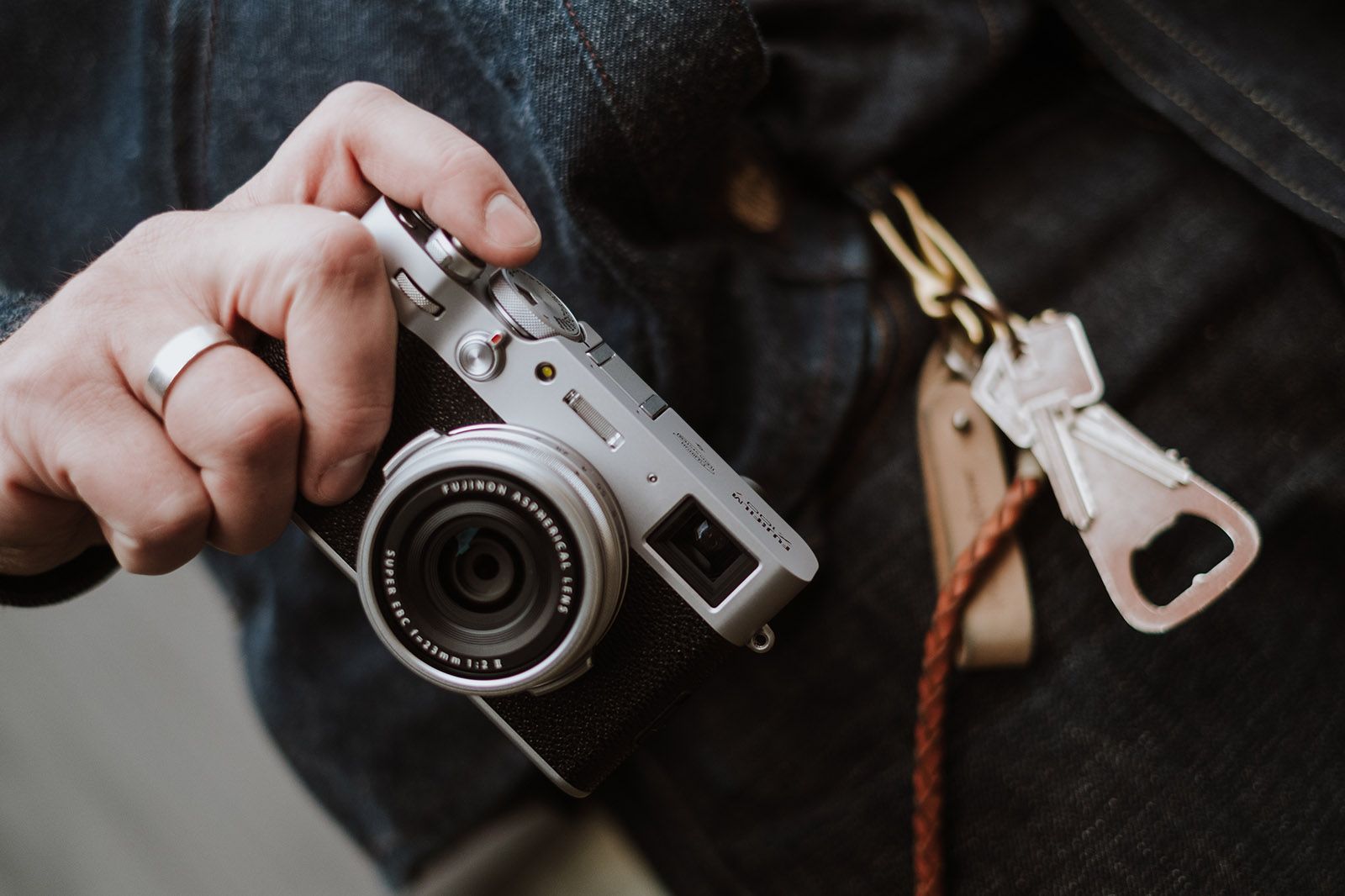For years Fujifilm has been making the finest fixed-lens cameras in its X100 series. These street photographer cameras are certainly specialist, given the fixed lens (i.e. no zoom), retro styling, and unusual viewfinder, but there's nothing else that can compete.
In February 2020, around two-and-a-half years after the release of the X100F, Fujifilm has revealed its follow-up, the X100V. So what's new for this fixed lens camera by comparison that might allure you to buy one?
Is the X100V's design the same?
- Weather-sealing (requires adapter ring and protection filter, sold separately)
- 3-inch LCD touchscreen, 1.62m-dot resolution, 90-degrees vertical tilt
- New ergonomic grip design
While Fujifilm hasn't gone back to the drawing board for the X100V - in that it looks much the same as the X100F - there are some tweaks and changes.
First, the grip has been redesigned to be more ergonomic. It's not a massive change, but at least Fujifilm is thinking beyond just plonking a new sensor into the same camera body and calling it a day. The X100V has a lot more thought put into it than that.
Second, the screen can now flip out away from the body, up to 90-degrees vertically, which ought to be useful for waist-level work. This has been implemented really nicely, without excessive bulk, just a little nub to the side of the screen to aid in pulling it away from the camera body. Or leave it in a fixed position, as the choice is yours.
Third, there's weather-sealing. Well, sort of. You'll need to attach the AR-X100 adapter ring and PRF-49 protection filter to achieve that resistance, none of which comes in the box. We think Fujifilm should have gone all-out in making the X100V sealed straight out of the box - although when purchased with the camera this kit is £49.50 in the UK.
Is the X100V lens new?
- 23mm Fujinon single focal length lens (equates to 35mm)
- f/2.0-f/16 aperture (9 blade diaphragm) with ring control
- Construction: 8 elements (incl. 2 aspherical) in 6 groups
- Focus range: 10cm to infinity
- Built-in ND filter (to 4 stops)
At first glance you might think the X100V's lens is identical to the X100F's. In many areas it is: the focal length, a 35mm equivalent, is the very same. So is the f/2.0 maximum aperture and manual control ring.
The difference lies in the construction. Although the eight elements arranged in two groups remains the same, two of those elements are now aspherical (in the X100F it was just one molded ASPH element).
Why is this useful? Aspherical lenses are a more oval shape and help to deliver a 'flatter' image appearance because the lens doesn't bulge in a spherical way. This will, for example, make for more natural portraits from a relatively wide-angle lens.
The new lens is also said to be capable of resolving higher resolution, delivering lower distortion, and focusing closer to subjects. In regards to that last point, it appears the close-focus distance of the X100V is the very same as the X100F, at up to 10cm from lens, but we suspect the V will deliver less fringes/abberations.
There's also a built-in neutral density (ND) filter, capable of stopping down four aperture values, which is great if you want to utilise the f/2.0 aperture in brighter conditions that might otherwise be impossible due to excessive light. The X100F had this feature, but only to three stops, so the X100V is giving that greater control.
Does the X100V have a new sensor?
- APS-C size X-Trans CMOS IV sensor
- 26.1-megapixel resolution
- 4K/30p video maximum
Yes indeed, the X100V comes with a newer sensor than the X100F. The idea is much the same though: it's APC-C sized, i.e. the same large scale you'll find in many DSLR cameras, which gives additional creative control when it comes to blurred background and overall quality.
It's also an X-Trans CMOS type, here in its fourth-gen guise, which is Fujifilm's way of delivering a colour filter to the sensor surface. While most sensors use a red-green-blue-green (four colour) array, the X-Trans CMOS pushes that to a 'randomised' 16 colour array, which means the company can remove the low-pass filter that you'll find in some competitors, thus avoiding the very minor softness this can introduce, while assuring accurate colour reproduction.
The main thing about the X100V's sensor is that it's slightly higher resolution - 26.1MP versus 24.3MP - and now capable of capturing video to 4K/30p in addition to the stills.
What about the X100V viewfinder?
- Hybrid optical/electronic rangefinder-style viewfinder unique to this camera series
- 0.5-inch size, 0.52x magnification, 3.69m-dot OLED panel, 1500nits brightness
If you've never used an X100 series camera before, the viewfinder might sound somewhat confounding. That's because it's the only camera series with what's called a Reverse Galilean finder, which combines a traditional optical finder with an electronic finder overlay, delivering the best of new and old in one solution.
When used as an optical finder, you'll see a large frame with parallax correction lines 'drawn' on the frame, meaning you can see an additional five per cent beyond the captured frame's edges (in the X100F this was eight per cent).
When used as an electronic finder, it's just like using a digital camera, with 100 per cent what-you-see-is-what-you-get capture. In the X100V, however, this is vastly improved over the X100F, thanks to switching to an OLED panel (no longer LCD), which means deeper blacks, brighter output, richer colours, and, in this case, a much higher resolution too (3.69 million dots, up from 2.36m-dots).
There's also the Electronic Range Finder (ERF) function, which blends optical and electronic finder to mimic an old rangefinder focus experience. You can see a smaller electronic preview scene to the corner while framing with the optical finder.
Fujifilm X100V: Price and release date?
- Price: $1,400 / £1,299
- Availability: from 27 February
- Finishes: Silver and Black options
The Fujifilm X100V will be available from 27 February 2020 if you purchase the Silver finish; the Black model will be available from 12 March 2020. Both finishes are priced the same, at $1,400 US and £1,299 UK.




